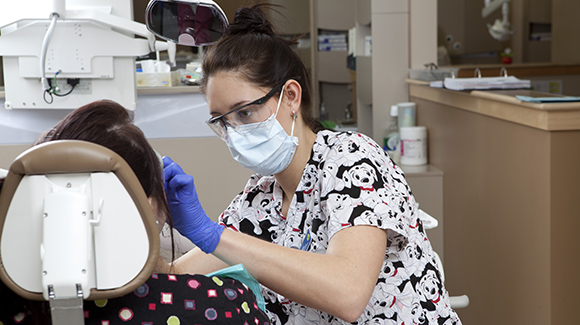
(Photo Credit: NAIT/Flickr)
The health care industry in Southern California, already one of the largest employers in the region, will generate more than 125,000 new jobs over the next five years — most of them in the so-called allied health profession where four-year degrees may not be required. This was one of several key findings in a report released May 24 by the Center for a Competitive Workforce funded by the California Community College Chancellor’s Office.
“Health care is a high growth economic sector. California Community Colleges are working to build a strong workforce with industry and other partners,” said Van Ton-Quinlivan, executive vice chancellor for the California Community Colleges. “Look to our community colleges for more and better career education programs that fuel regional economies with skilled workers across California and increase social mobility for Californians.”
The report, “Health Care Services in the Los Angeles Basin,” points to the vital role health care plays in the local economy responsible for nearly ten percent of the regional workforce. And while the demand for that workforce is only expected to increase, health industry leaders expressed concern about the supply.
“Too many people don’t realize these jobs even exist,” said Jennifer Bayer, vice president of external affairs and strategic communications for the Hospital Association of Southern California. “We need to get more data out there and start educating people about the value and the need for these jobs.”
Allied health care professions – generally considered professions other than physicians and nurses – include a wide variety of jobs including clinical lab scientists, radiology technicians, dental hygienists, and physical therapists. While most require higher education degrees, many of these mid-level positions only require associate degrees.
Radiology tech Luz Manrique graduated from Los Angles City College’s program and is now working full-time at Good Samaritan Hospital. The single mother of two returned to college and to the workforce to take advantage of the opportunity.
“What motivates me day to day is that I’m able to help people,” Manrique said. “When you’re in the hospital, that’s the last place you want to be. If I’m able to put a smile on somebody’s face, I did my job.”
The report, the third in a series of deep-dive analyses of the region's workforce, is designed to encourage the local community college system to work more closely with industries to make sure there is a clear training and education path for students.
“Community colleges continue to provide many entry-level professionals in health care,” said Richard Verches, Los Angeles County director of the Los Angeles/Orange County Regional Consortium (LAOCRC). “But the colleges need to have more insight into what the health care industry needs.”
The report is designed to help workforce training institutions like the community colleges align their programs with demand from local industries. The report’s conclusions are also intended to help employers identify and engage with talent pipelines, and help students become more familiar with the middle-skill occupations that present career opportunities.

